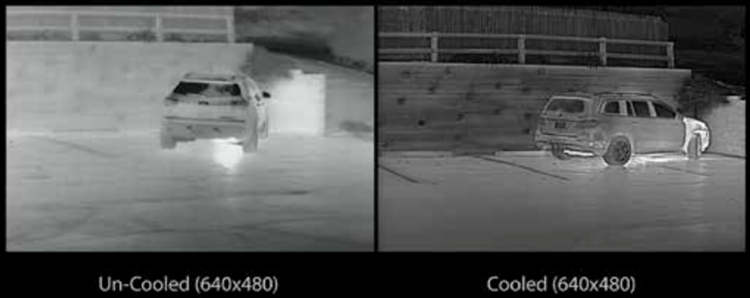Unveiling the World of Thermal Imaging: How It Works
Nov 13th 2023
In the realm of cutting-edge optics, a technology known as thermal imaging has been making waves, and for a good reason. This revolutionary technology is transforming the way we see the world, enabling us to detect, measure, and display infrared radiation, particularly in the medium wavelength infrared (MWIR) and long wavelength infrared (LWIR) ranges. But how does this fascinating world of thermal imaging actually work? Let's dive into it.

The Magic of Emissivity
Thermal imaging is all about capturing temperature differences in objects and their surroundings, helping us visualize the heat radiating off them. To achieve this, thermal cameras record the temperature disparities of various objects in their field of view. Here's where it gets intriguing: each temperature is assigned a distinct color, which gives us the ability to differentiate between objects based on the heat they emit.
However, there's more to it. In this thermal imaging adventure, we encounter the concept of emissivity. Emissivity quantifies an object's ability to release or emit heat. For instance, imagine a dense, wooded area on a chilly night. A warm-blooded animal would unmistakably stand out against the cooler forest when captured through a thermal imaging camera. Similarly, in a security setting, an intruder's body would conspicuously contrast with the surrounding environment. Emissivity plays a pivotal role in how well thermal imaging technology works.


The Components of a Thermal Imaging Camera
Behind the scenes, a thermal imaging camera is a sophisticated piece of equipment composed of four key components:
1. Lens: This is the camera's "eye," capturing the infrared radiation from the objects it observes.
2. Thermal Detector Focal Plane Array (FPA): The heart of the camera. The FPA detects thermal energy emissions in the infrared spectrum and translates them into an image.
3. Video Processing Electronics: These work their magic to process the data from the FPA and create a thermal image.
4. Display: This is where you, the user, get to witness the thermal wonder unfold before your eyes.
The FPA, in particular, is the most crucial part of a thermal imaging camera. It's the technology marvel that converts thermal energy into a clear image, highlighting temperature differences as small as 0.1 degrees Fahrenheit.
Thermal vs. Night Vision
Now, let's address an essential distinction: thermal imaging is not to be confused with night vision devices (NVDs). Night vision devices, including image intensifiers, rely on near-infrared (NIR) wavelengths to create images. On the flip side, thermal imagers sense temperature differences between an object and its environment, honing in on wavelengths in the MWIR and LWIR bands (ranging from 3,000 to 14,000 nanometers).
Night vision devices, equipped with cascade image tubes or photocathodes, amplify existing light. In stark contrast, thermal imagers employ the mighty FPA, a grid of sensor elements, each contributing to the final image by detecting temperature disparities.
Cooled vs. Uncooled
Now, here's a cooled (or uncooled?) twist in the thermal imaging saga. Early thermal imagers used cooling mechanisms, which involved chilling the detectors to extremely low temperatures. However, with advancements in technology, uncooled devices emerged. The catch is, uncooled thermal imaging cameras operate at ambient temperatures, which does come with a trade-off: reduced sensitivity compared to their cooled counterparts. Nevertheless, uncooled thermal imaging cameras offer cost-efficiency, a smaller footprint, and quieter operation, making them a practical choice for many applications.
In closing, thermal imaging is a game-changer in optics technology, empowering us to see the invisible, the heat that objects radiate. With its fascinating components and its ability to operate day or night, it's no wonder that thermal imaging has captured our imaginations and opened up a whole new world of possibilities. Whether you're using it for security, hunting, or scientific research, understanding how thermal imaging works can help you maximize its potential.

